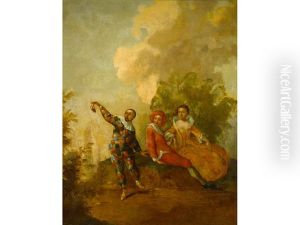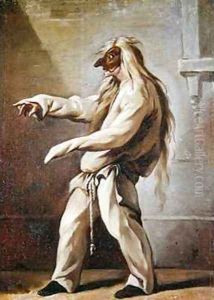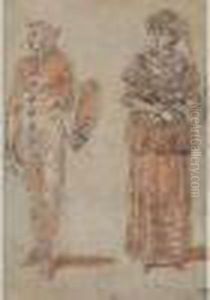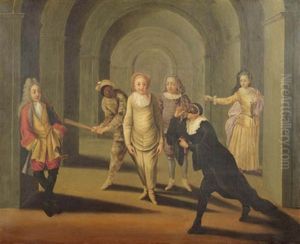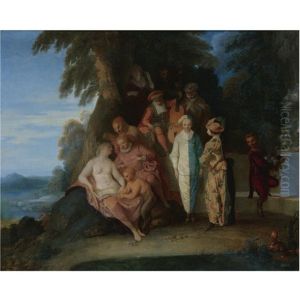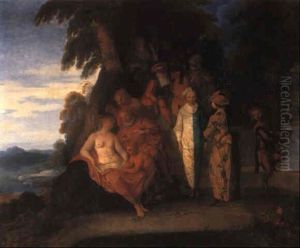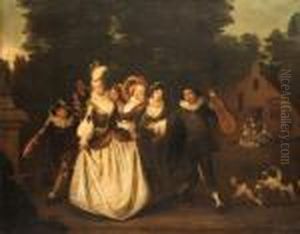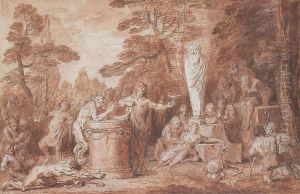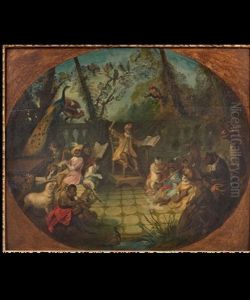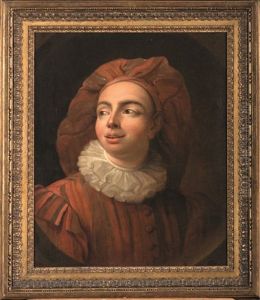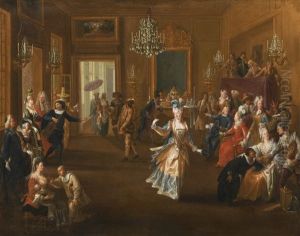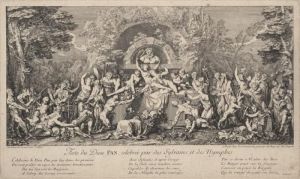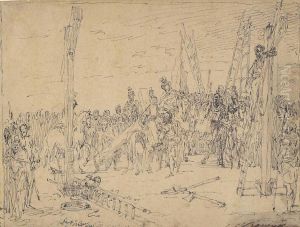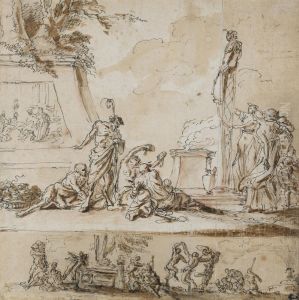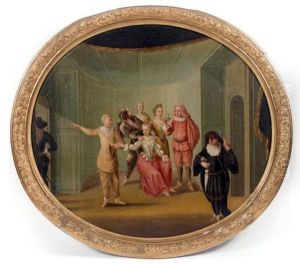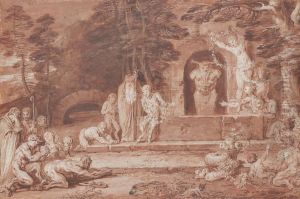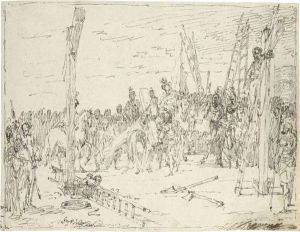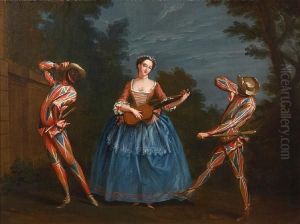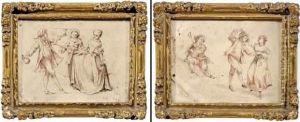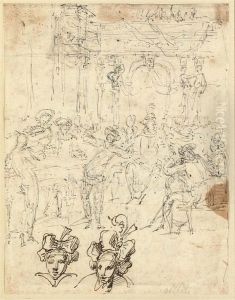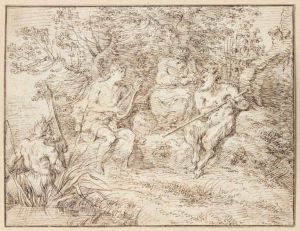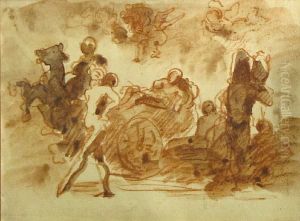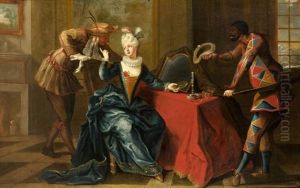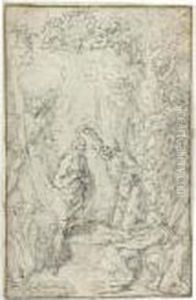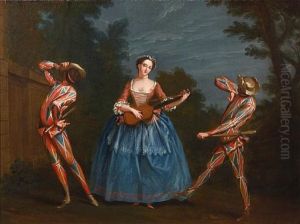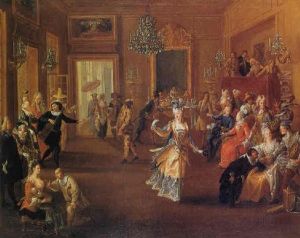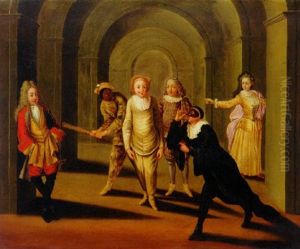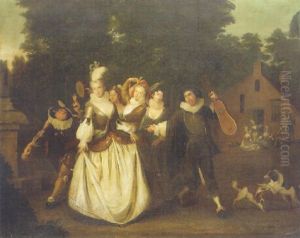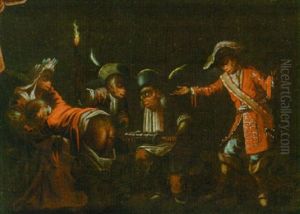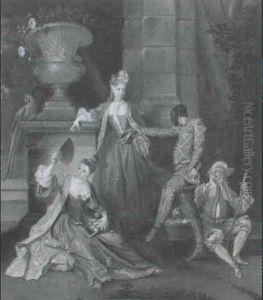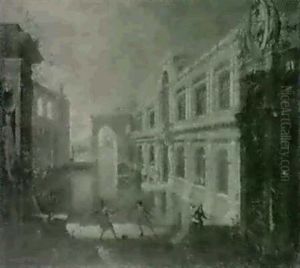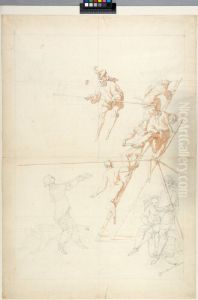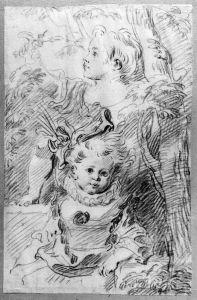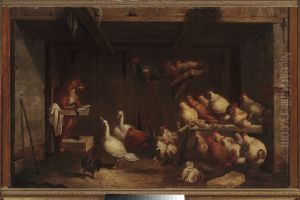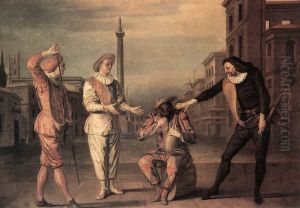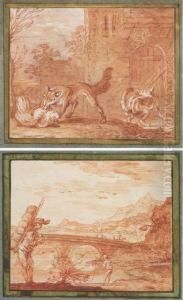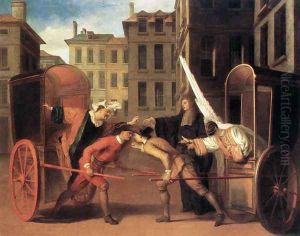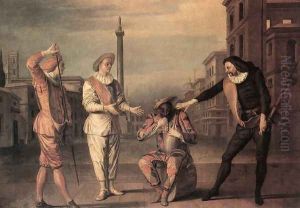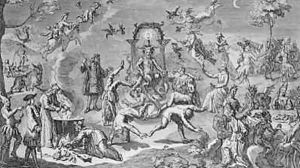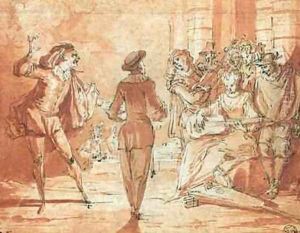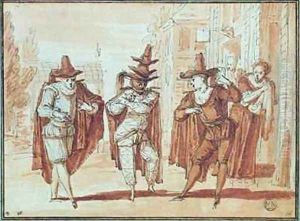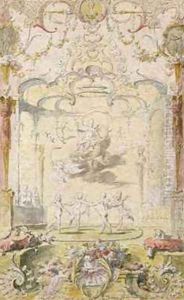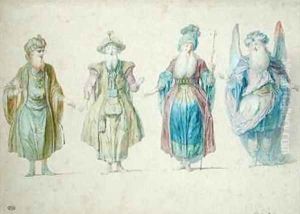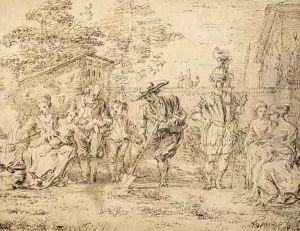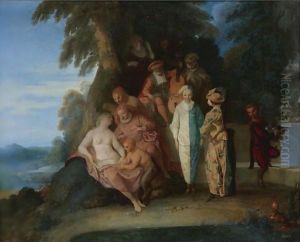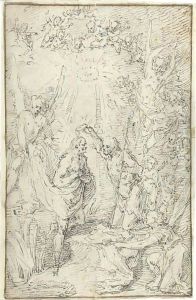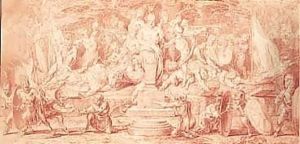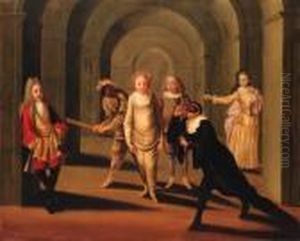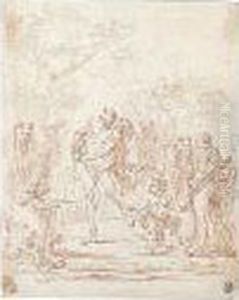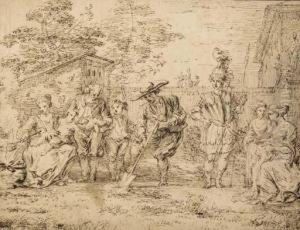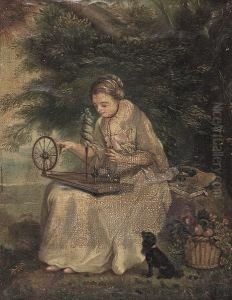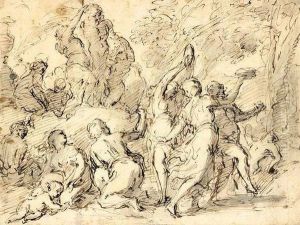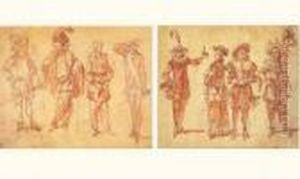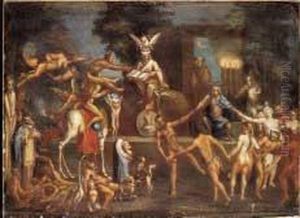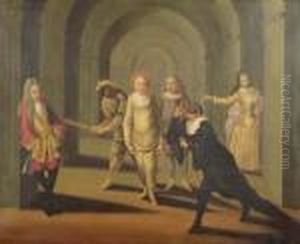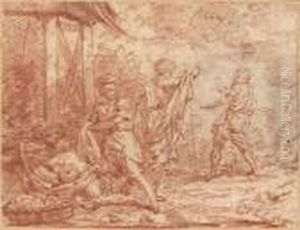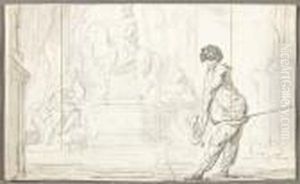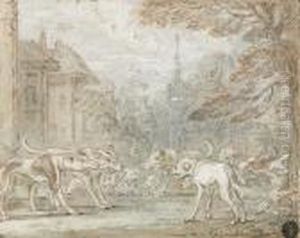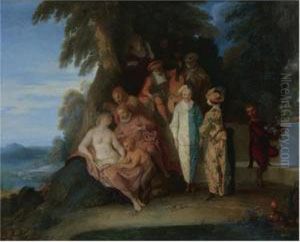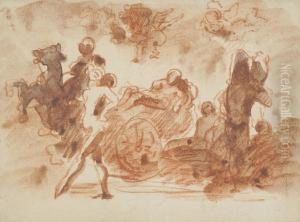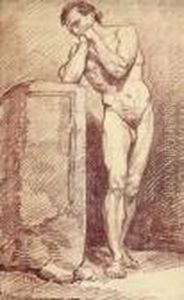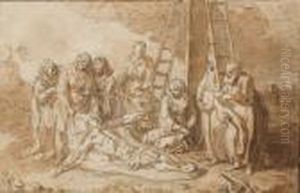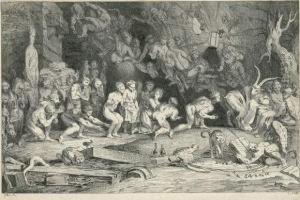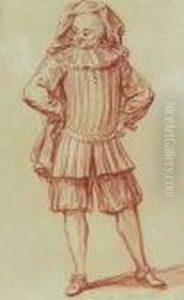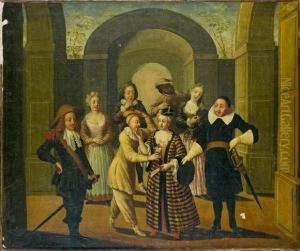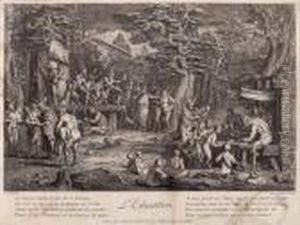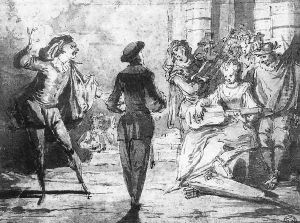Claude Gillot Paintings
Claude Gillot was a French painter, best known for being one of the pioneers of the Rococo style, and a master to the famous French artist Jean-Antoine Watteau. Born on April 27, 1673, in Langres, France, Gillot grew up in an environment that was conducive to his artistic development. His father, a landscape painter and engraver, provided him with his initial training in the arts.
Gillot moved to Paris to further his career, where he became known for his theatrical designs and was involved in the decoration of theatres. He was particularly known for his work related to the Italian commedia dell'arte, a form of theatre characterized by its improvised dialogue and a cast of colorful stock characters. He created a number of works that depicted scenes from this theatrical tradition, which were celebrated for their dynamic compositions and satirical edge.
In Paris, Gillot's talents flourished, and he became a teacher to Watteau, who would go on to be one of the most important painters of the Rococo era. Watteau's famous 'fêtes galantes' genre, which depicted aristocratic outdoor entertainments, owes a significant debt to Gillot's influence. Gillot's own style was marked by a lightness of touch, elegant figures, and a playful approach to subject matter, all of which would be hallmarks of the Rococo movement.
Despite his influence on the Rococo style and his success as a decorator and painter, Gillot did not receive the recognition he likely deserved during his lifetime. He was admitted to the Académie Royale as a painter of 'fêtes galantes' in 1715, but he never reached the same level of fame as his pupil Watteau.
Claude Gillot passed away on May 4, 1722, in Paris. His legacy continued through the artists he influenced, and today, he is remembered for his contributions to the early development of the Rococo style and his role in shaping the artistic path of Watteau. His works can be found in various museums and collections, attesting to his skill and creativity as an artist of the early 18th century.
